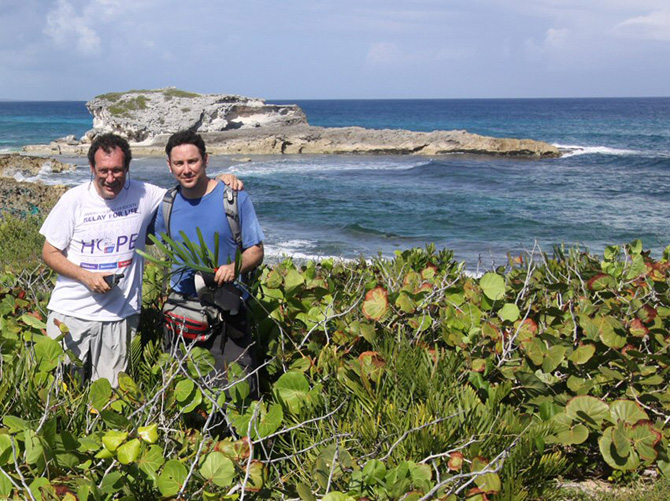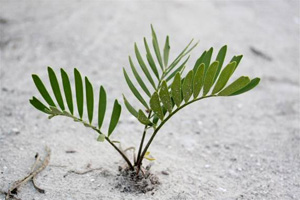Michael Calonje, Montgomery cycad biologist, and his colleagues — David Knowles and Lindy Knowles from the Bahamas National Trust, Javier Francisco-Ortega at FIU and FTBG, Alan Meerow and Kyoko Nakamura from the USDA, and Patrick Griffith — just published a landmark paper on the conservation biology and population genetics of Zamia in The Bahamas.
 The paper focused on Zamia lucayana, which is only known from a narrow area of coastal habitat on Long Island, but also surveyed the two other Bahamian species, Z. integrifolia and Z. angustifolia. Zamia integrifolia occurs on several Bahamian islands. Perhaps the most urgent survey finding was that Bahamian Z. angustifolia is reduced to just 150 adult plants on Eleuthera.
The paper focused on Zamia lucayana, which is only known from a narrow area of coastal habitat on Long Island, but also surveyed the two other Bahamian species, Z. integrifolia and Z. angustifolia. Zamia integrifolia occurs on several Bahamian islands. Perhaps the most urgent survey finding was that Bahamian Z. angustifolia is reduced to just 150 adult plants on Eleuthera.
Conservation survey found less than 1,000 adult Z. lucayana plants, which are threatened by development. Germplasm for ex situ conservation was distributed to the Bahamas National Trust and leading cycad collections in the US, China, and Mexico.
 The population genetics of Z. lucayana were investigated in detail through DNA microsatellite markers. Results indicate that the separate populations of Z. lucayana were historically connected through interbreeding, but are experiencing genetic drift due to recent isolation. Michael states:
The population genetics of Z. lucayana were investigated in detail through DNA microsatellite markers. Results indicate that the separate populations of Z. lucayana were historically connected through interbreeding, but are experiencing genetic drift due to recent isolation. Michael states:
“We found the three main Zamia lucayana populations had enough genetic similarity to each other to be considered a single population for conservation purposes. The populations were healthy and reproductively active, but several real estate subdivisions surrounded the habitat. We hope that future residential development within the vicinity will take place without directly impacting the small coastal dune population of these endangered plants.”
The paper represents the first in-depth study of conservation genetics of a Critically Endangered endemic plant in the Bahamas archipelago and of the few studies focusing on plants from the Caribbean Islands Biodiversity Hotspot. Javier, the study’s leader, states:
“This study demonstrates the synergy that can develop for Caribbean plant conservation when you have a team with extraordinary molecular and field skills. I am not aware of any other published study for Caribbean endemic plants that has such a complete output pertinent to basic population genetic questions, conservation management recommendations, and exhaustive field work.”
The paper appears in the latest issue of Oryx, the International Journal of Conservation, the leading journal for applied conservation worldwide. This work was generously supported by a grant from the Mohamed bin Zayed Species Conservation Fund, an award from the National Science Foundation, a Christiane Tyson Research Fellowship, and funds from the participating organizations.
